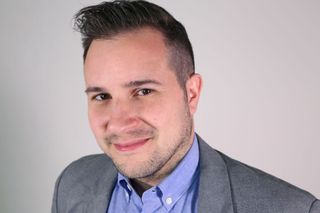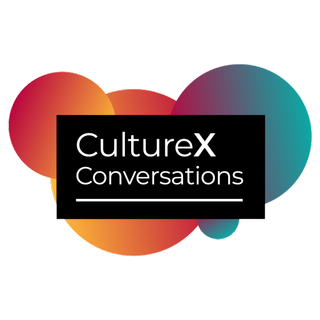6 Questions for GLAAD CCO Rich Ferraro

Former MTV Networks executive Rich Ferraro is the chief communications officer of GLAAD (formerly Gay and Lesbian Alliance Against Defamation), the organization devoted to countering discrimination against lesbian, gay, bisexual, transgender and questioning (LGBTQ) individuals in the media and promoting understanding, acceptance, and equality. On Wednesday, March 25, he is scheduled to present new market data for reaching LGBT audiences at CultureX Conversations, part of NYC TV Week Spring. MCN had some questions on GLAAD-related topics for Ferraro ahead of the event.

MCN: The LGBTQ community is a force, they have established their niche within the TV community as leaders who are fierce and driven. Please tell us about the specific data you have on the evolving community as consumers and TV viewers?
RICH FERRARO: I recall hearing trailblazing actress and advocate Laverne Cox say, “If you are not counted, then you do not count” and I believe that’s the case for LGBTQ TV viewers. That’s why GLAAD spent several years working with Nielsen to update their ratings to segment out LGBTQ viewers. We rolled out the first phase of the update with Nielsen in late 2018, which counts households headed by a same-sex couple, and are continuing to ensure the entire community is accurately represented. GLAAD’s most recent TV report shows that LGBTQ representation on TV is at an all-time high, so the Nielsen data can help show networks and advertisers what our sought-after advertising demo is tuning in for. Knowing that a large portion of LGBTQ people are tuning in could help save LGBTQ-focused shows.
MCN: How have you leveraged advertisers for TV in the past year?
RF: GLAAD went public about our plans to approach advertisers on The Hallmark Channel after the channel decided to pull an ad featuring two women marrying. We wanted to see if the advertisers stood by The Hallmark’s Channel anti-gay decision. We then worked with The Hallmark Channel very closely after that public call and they reversed the decision. Advertisers can play a huge role in how a network acts and what type of programming a network moves forward.
Also, advertising plays a massive role in shaping how viewers view their world and GLAAD has been consulting with brands including P&G, the world’s largest advertiser, to increase LGBTQ visibility in ads. Advertising is the most pervasive form of media and LGBTQ people are often invisible, but now a rainbow wave has started across advertising.
Related: 5 Questions with Julio Vaquiero
Broadcasting & Cable Newsletter
The smarter way to stay on top of broadcasting and cable industry. Sign up below
MCN: How has the continuation to influence producers to be inclusive and respectful changed over the past 2-3 years?
RF: GLAAD has consulted behind-the-scenes with producers, scriptwriters, casting directors, and other creatives for nearly 35 years, but 3 years ago we formally launched the GLAAD Media Institute, a program within GLAAD that is dedicated to this type of consultation and education. Our team of experts have decades of experience working with the world’s biggest content creators to tell authentic, entertaining, and enlightening stories. Over the past few years, the GLAAD Media Institute has expanded its consulting work to video games, advertising, kids TV, and children’s books.
MCN: Has messaging changed recently to educate consumers to be more mindful and open?
RF: Media and advertising are intended to reflect the world around us and today that includes LGBTQ people and families. Consumers expect to see LGBTQ people represented and I think the messaging to them has not changed, but the expectations of the media creators have changed. Not only do viewers expect to see LGBTQ people included, but they expect that it will be done in an authentic way that does not pander. This is often truly an artform and we at GLAAD have worked with some of the biggest content creators to perfect it.
MCN: What does the future hold for the evolution of the LGBT community as consumers and TV viewers? What is your hope for change in the next 5 years?
RF: LGBTQ people have always been known as loyal – we support brands who support us. And the bar has been raised for inclusion. It’s no longer enough for a brand to throw a rainbow on a t-shirt and march in a LGBTQ Pride parade. Some of our best practices for reaching our community include ensuring that a portion of proceeds go back to our community and that your brand is there year-round for LGBTQ people. For instance, GLAAD is working on a letter from corporations that speaks out against 5 anti-LGBTQ bills in Tennessee. Every brand that participates in Pride or has done a LGBTQ marketing campaign, and does business in Tennessee, should sign the letter – if not, our community will call you out as inauthentic.
In terms of TV, GLAAD has been counting LGBTQ representation on TV for 24 years. Last fall, in our latest report, we found that of the 879 series regular characters expected to appear on broadcast primetime scripted programming, 10.2% were counted as LGBTQ. This is the highest percentage of LGBTQ regular characters GLAAD has counted on primetime scripted broadcast programming. In 2018, GLAAD called on the broadcast networks to ensure that 10% of primetime broadcast scripted series regulars were LGBTQ by 2020. In just one year, the networks met and exceeded this call. Notably for the first time this year, LGBTQ women on primetime broadcast scripted series outnumber LGBTQ men on those programs. Additionally, this is the second year in a row on broadcast where LGBTQ people of color outnumber white LGBTQ people, 52% to 48%.
This diversity is what LGBTQ TV viewers will expect going forward – LGBTQ people represent every religion, race, background, gender, age, and ability – and we expect to see characters and stories that look at underrepresented communities within the LGBTQ community, like trans and non-binary people, queer Muslim people, and people living with HIV.
MCN: How has the current political climate affected the work done by GLAAD and what will your organization be doing in the run up to the election this fall?
RF: Under President Obama we saw the fall of Don’t Ask, Don’t Tell and the passage of marriage equality nationwide. LGBTQ people – including GLAAD – were invited to the White House for Pride celebrations and for roundtables about issues that impacted our community. The current Administration has emboldened anti-LGBTQ voices nationwide and invited some of the most anti-LGBTQ organizations and voices to the White House. That level of visibility is only one small piece of what’s at stake for LGBTQ people during this election. GLAAD has counted over 130 attacks in rhetoric or policy from President Trump and people he’s appointed to his Administration, including filing a brief in support of granting businesses the legal ability to fire someone simply for being LGBTQ. This type of action has a huge trickle-down effect – into Churches, classrooms, and workplaces. GLAAD is a 501(c)3 non-profit so we are not permitted to endorse candidates, but we will be engaging in a large-scale ‘get out the vote’ effort to drive LGBTQ people and allies to the polls – and let them know what’s at stake.
